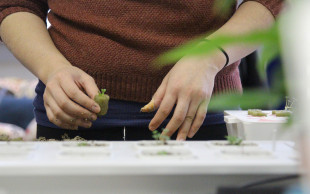Beer. Everyone loves it. It’s always a source of joy, especially when it’s more affordable compared to the horrifying bill total that usually accumulates for cocktails or wine. There are many things you might want to know about beer, and it ranges from possible health benefits (all the more to drink it), to nuggety fun facts you’d try to remember and impress with at parties.
1. It started with women
When beer brewery became professional, women were the ones who stood at the helm and made sure everything was okay and tasty. And that should be saying a lot, because in ancient Babylon, it is said that bad beer called for prosecution (by drowning in their own mediocre beer – justified, I believe). Those Oktoberfest ladies? Yeah, they’re to thank for our beers.
2. How to stash them
As with any alcohol, storage is really important. Beers are pretty gassy, and no matter how technology has evolved, you still wouldn’t want to risk it going flat. Always store it upright, instead of laying the bottles or cans flat, so that it will help reduce oxidation. Doing so also reduces the risk of contamination when the beer comes in contact with the bottle cap.
Also, beers are sensitive to light (not that it really matters a lot since they will be stored in your fridge) and are best stored in darker colored bottles, like brown bottles. Green bottles are said to encourage infiltration of light into the bottle, and may make beers spoil faster. Therefore if you ever buy beer that comes in a green bottle, it’s best that you finish it right up!
3. Rule of thumb
Before brewery became advanced, brewers had to stick a thumb or finger into the hop and wort mixture before adding yeast. It takes an optimum temperature for yeast to ferment as it doesn’t thrive in temperatures that are too cold or too hot. This is also how the phrase “rule of thumb” came about.
4. How it’s made
In general terms, beer is made from malted barley. A liquid called wort is then drained off, and hops are added to it. This hop is a plant that’s responsible for the beer’s bitterness and acts as a preservative. Yeast is then added, which contributes to the beer’s ethanol (its alcohol) and its CO2 (its bubbles).
5. Ales or lagers?
On the topic of brewery, beers are mainly classified into two categories – ales and lagers. Ales (form England) is made with yeast that ferments at the top of the fermentation vessel, taking place in room temperature. Lagers (from central Europe) on the other hand, has yeast fermenting at the bottom of the vessel, and is cold-brewed.
Ales tend to be darker and more bitter, whereas lagers tend to be lighter and sweeter. An example of an ale are stout beers, which are known to be dark. Lagers are more common and they’re pretty much everywhere – Corona, Stella, Heineken, the list goes on.
6. Hops make you hopped up
The plant has bountiful health benefits – it helps with inflammation in your joints, your sleep, breathing, and digestion. They also prevent the formation of kidney stones. Beer itself is diuretic (makes you pee) and it helps keep it going. If you have a kidney stone, beer could really help to push it out of your system, not just because of the increased amount of liquid that makes you need to go, but because it helps to dilate the ureters (connecting the kidneys and bladder). It also helps in alleviating pain.
Apart from the hops, beers are rich in silicon, which helps your bones by increasing your calcium and minerals in your bone tissues.
7. Gone with the wind
One of the many ways alcohol is purged out of your body is through gas-release, and beer is very susceptible to flatulence. This is due to the yeast’s CO2 content. It also leads to the fact that when you are feeling uncomfortable from indigestion or just bloated, beer can help purge gas out of your system, and make you feel better.
8. P's and Q’s
Another interesting origin story – back in England, pub owners would tell rowdy customers to just mind their pints and quarts. Beer was ordered in either pints or quarts, and we still use that system now. That’s how the phrase “mind your P’s and Q’s” came about.
9. Foaming at the mouth
The foam at the top of the beer is pretty crucial. It comes from the yeast fermented CO2, and it typically is an indicator to the quality of the beer. You’d realize that after hanging out for a bit with your friends, the foam disappears – and you’ll also realize that the taste of your beer starts to deteriorate. So when your beer is served with no foam, it can mean that it’s going to taste flat.
Also, by tilting the glass back and drinking it, notice the foam sticking onto your glass. It’s called a “Brussels lace” and some say it indicates a good beer.
10. Stains
If you ever feel like you could bear to part with a beer, you could use them to get rid of caffeine stains in fabric couches. Don’t fully commit just yet though – as with everything you clean, you need to test it out on the fabric first, lest there be discoloration. Try it out near the corner of said couch, and if there is no discoloration or anything alarming, work it onto the stain until it disappears.
There we go – 10 facts about beer. It’s all fun and games until someone gets belligerently drunk and can’t remember these facts. But if you do, excellent! Knowing facts about your beer arguably makes you cooler than the beer-pong champion.

















